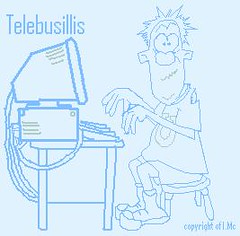Nokia & Navteq – A Tricky Course to Steer
A great ballsy, albeit expensive, move by Nokia today, in buying Navteq. I am a huge bull on the prospects for mapping products in general and mobile location based services in general.
I don’t suppose many of Nokia mapping competitors will be surprised, after all it appears that a hush-hush kind of auction was conducted and that probably accounts for Nokia paying top euro or to be more precise €5.4bn euros. The real question is what are the current and future Nokia competitors going to do about it?
For data aggregators and enhancers like Webraska and Networks in Motion, who use the Navteq data to supply services across a range of handsets to mobile operators such as Orange UK and Verizon Wireless respectively, it is probably time to have a long hard look at strategy and decide whether they have the stomach and deep pockets for a new course of action.
For the poster boy of the standalone GPS device market, TomTom, who is already in the process of acquiring the only real competitor to Navteq, TeleAtlas, for the relatively cheap €1.8bn, there is definitely a gap appearing in the market for mobile manufacturer independent mapping software and services.
For the internet mapping giants, Google and Microsoft, they’ll probably have to go and collect their own data, "improve" on TeleAtlas and Navteq collection quality and contextual richness and then cut a deal directly with the mobile operators. Vodafone UK already has a deal for Google Maps.
The added complication is that the optimal business model is nowhere near being decided:
Even better for Nokia is that they will actually own the mapping content and not have to deal with the crazy intermediaries of content as with the other major OVI service already announced - music downloads.
I don’t suppose many of Nokia mapping competitors will be surprised, after all it appears that a hush-hush kind of auction was conducted and that probably accounts for Nokia paying top euro or to be more precise €5.4bn euros. The real question is what are the current and future Nokia competitors going to do about it?
For data aggregators and enhancers like Webraska and Networks in Motion, who use the Navteq data to supply services across a range of handsets to mobile operators such as Orange UK and Verizon Wireless respectively, it is probably time to have a long hard look at strategy and decide whether they have the stomach and deep pockets for a new course of action.
For the poster boy of the standalone GPS device market, TomTom, who is already in the process of acquiring the only real competitor to Navteq, TeleAtlas, for the relatively cheap €1.8bn, there is definitely a gap appearing in the market for mobile manufacturer independent mapping software and services.
For the internet mapping giants, Google and Microsoft, they’ll probably have to go and collect their own data, "improve" on TeleAtlas and Navteq collection quality and contextual richness and then cut a deal directly with the mobile operators. Vodafone UK already has a deal for Google Maps.
The added complication is that the optimal business model is nowhere near being decided:
- is the profit going to be from bundling the software in with the handset?
- is the profit going to be charging for service or bundling the service in with access?
- is the profit going to be from advertising? or
- perm any of the above?
Even better for Nokia is that they will actually own the mapping content and not have to deal with the crazy intermediaries of content as with the other major OVI service already announced - music downloads.




<< Home